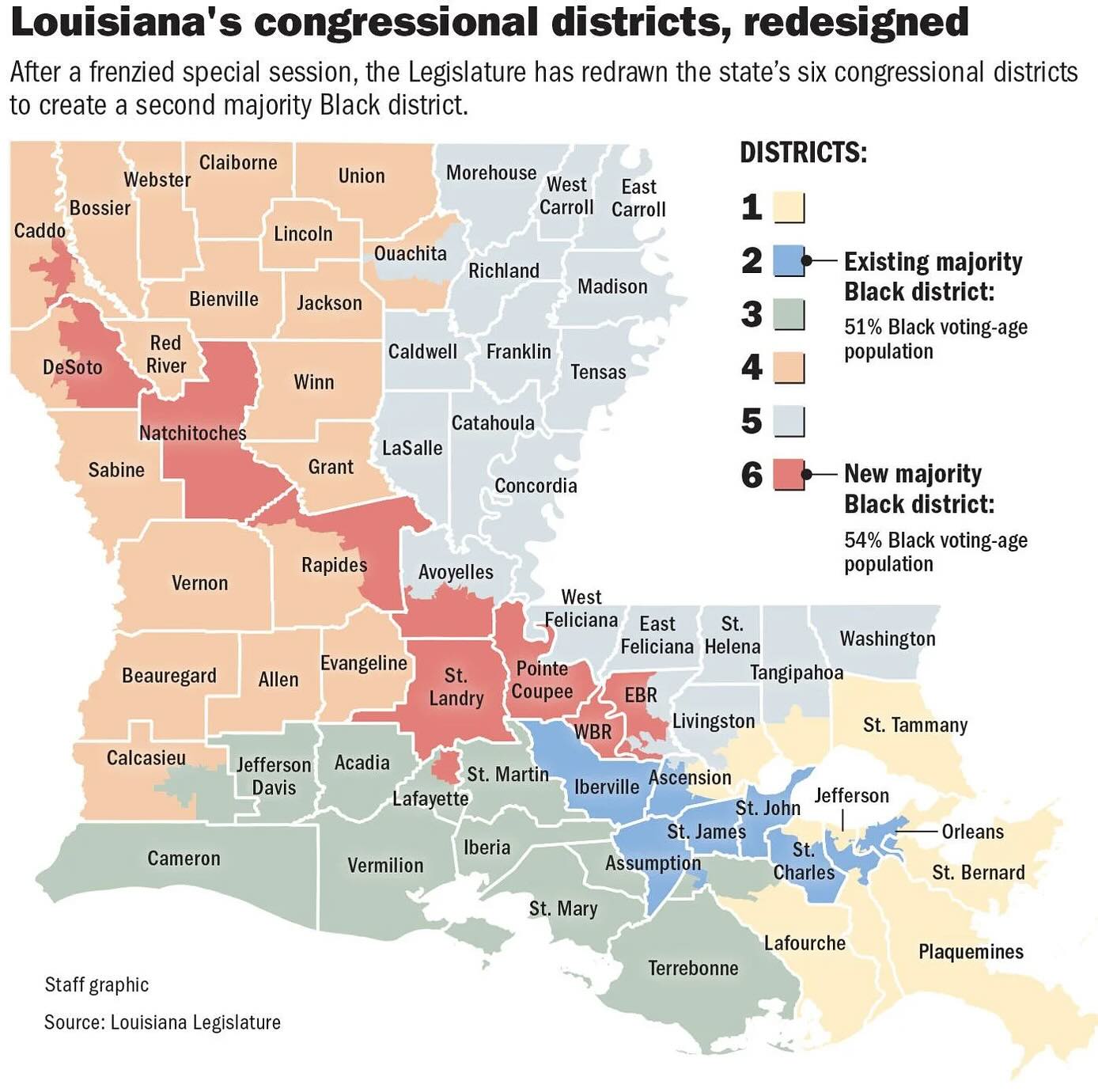In recent Louisiana politics, a significant change has occurred with the redrawing of the state’s congressional districts, a development that directly impacts the political landscape both locally and nationally. We wanted to take some time to demystify the redistricting process, explaining why it happened, its implications, and what it means moving forward.
Why Redistricting Happened
The redistricting process in Louisiana was driven by a federal court ruling that found the previous congressional map diluted Black voting power, violating Section 2 of the Voting Rights Act. This decision came after a prolonged legal battle aimed at ensuring fair representation for Black voters in Louisiana, who make up nearly a third of the state’s population but were majorities in only one of six districts. The 5th US Circuit Court of Appeals gave the legislature a January 30, 2024 deadline to draw a new congressional map.
When and What Elections Will Be Impacted
The new map was enacted on January 22, 2024 – just ahead of the 2024 congressional elections. This timing means the newly drawn districts will be in effect for these elections, potentially reshaping the state’s delegation to Congress starting with the election on November 5, 2024.
Who is Impacted
The redistricting process has resulted in significant changes for Louisiana’s 6th Congressional District, increasing its Black voter makeup from 23% to 54%. This alteration shifts the district from a likely Republican hold to a probable Democratic gain, affecting both the incumbent, Rep. Garret Graves, and other political figures considering runs in the new landscape, like Quentin Anthony Anderson 🙂
Impact on the Political Landscape
The creation of a second majority-Black district is expected to enhance Democratic chances in Louisiana, contributing to a more balanced representation that reflects the state’s racial demographic makeup. While this is a victory for advocates of voting rights, it also doesn’t help alleviate concerns about regional representation – especially for those who are worried the new district is too South Louisiana heavy, at the expense of North Louisiana representation.
Quentin’s View
While I recognize that redistricting/gerrymandering is a fraught process, I also understand that this particular outcome is a step towards correcting historical injustices in representation. Although the solution is not perfect and might reduce geographic coherence, it addresses the longstanding underrepresentation of Black Louisianans. I am committed to supporting fair maps that promote equitable representation. I view the new district setup as an imperfect but positive advance towards truly fair representation.
I am hopeful that this change is a move towards resolving the issues of fair representation once and for all. It’s crucial that every citizen feels represented and that every community has a voice in the halls of power. This redistricting, while a compromise, is a stride in the right direction.
Conclusion
As we approach the 2024 elections, it’s vital for voters to understand the new dynamics at play. This redistricting isn’t just a reshuffling of boundaries—it’s about making democracy work better for everyone. By ensuring that more voices are heard, we strengthen the fabric of our community and our nation.
For more details on our campaign’s stance and updates, visit Anderson2024.org.

